10 Deep Sea Creatures That Are (Almost) Too Bizarre to Be Real
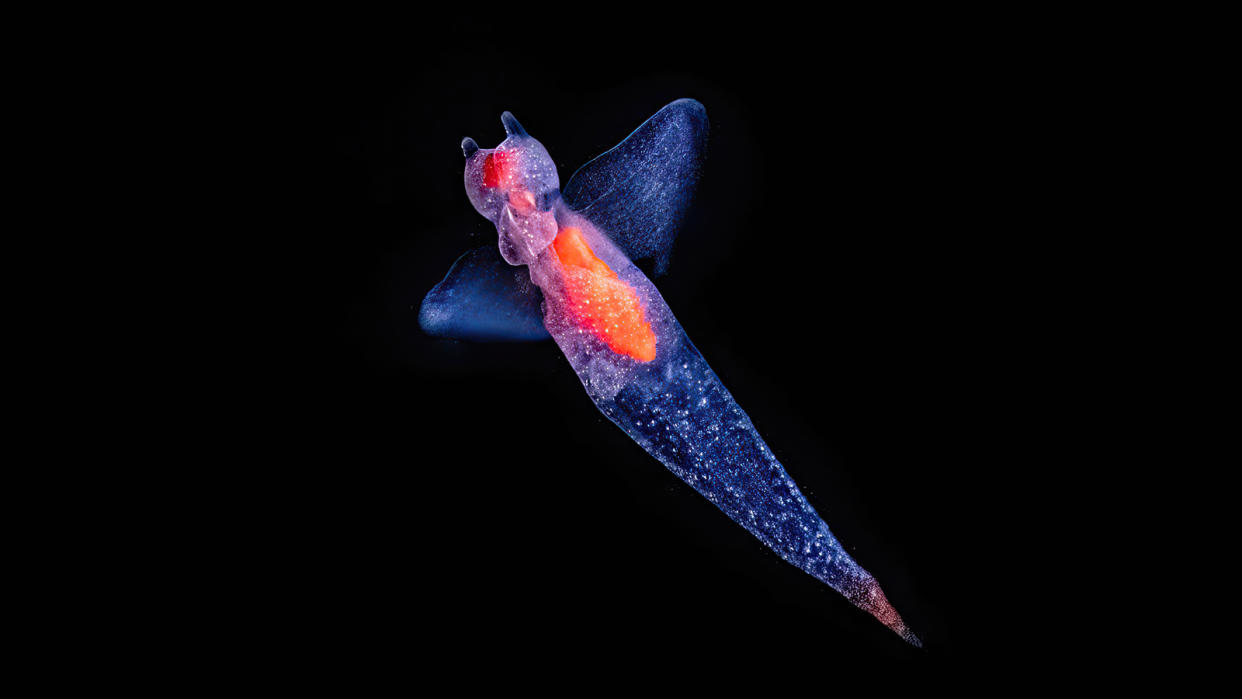
Far below the ocean's surface, in the dark depths of the deep sea floor ecosystem (about 3,000 feet or 1,000 meters deep), exists an entire world of deep sea creatures that humans rarely glimpse.
It's one of the planet's largest ecosystems, but remains relatively unexplored. Here are some of the deep-sea animals that we do know something about.
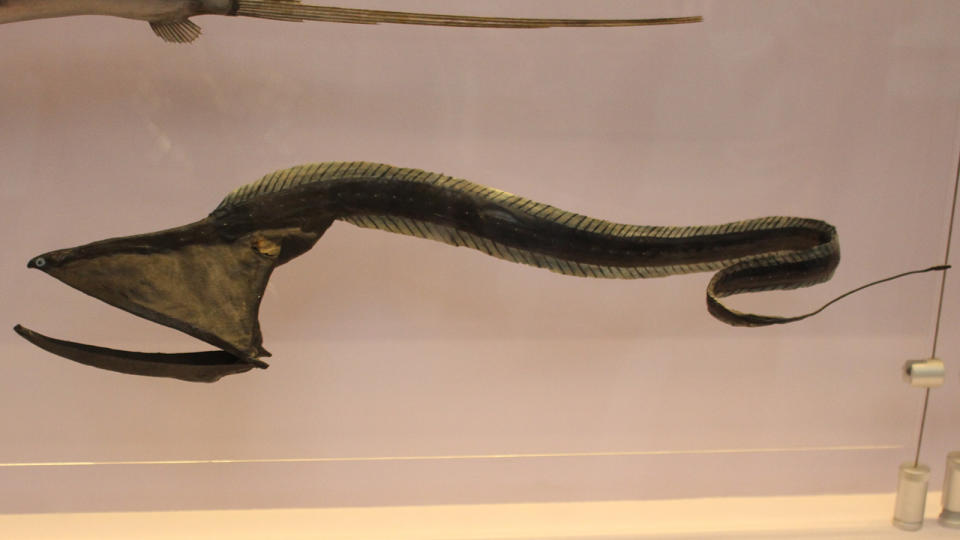
1. Pelican Eel
The pelican eel (Eurypharynx pelecanoides) is a type of gulper eel that uses its large, pelican-like mouth to gulp up its prey. Like other members of the Eurypharyngidae family, the pelican eel's mouth can actually be longer than its tapered body, which can expand to fit the prey it swallows whole.
Pelican eels live in the mesopelagic zone (also known as the middle pelagic or twilight zone), at depths of around 9,000 feet (2,700 meters) along with other terrifying-looking deep-sea creatures like the vampire squid.
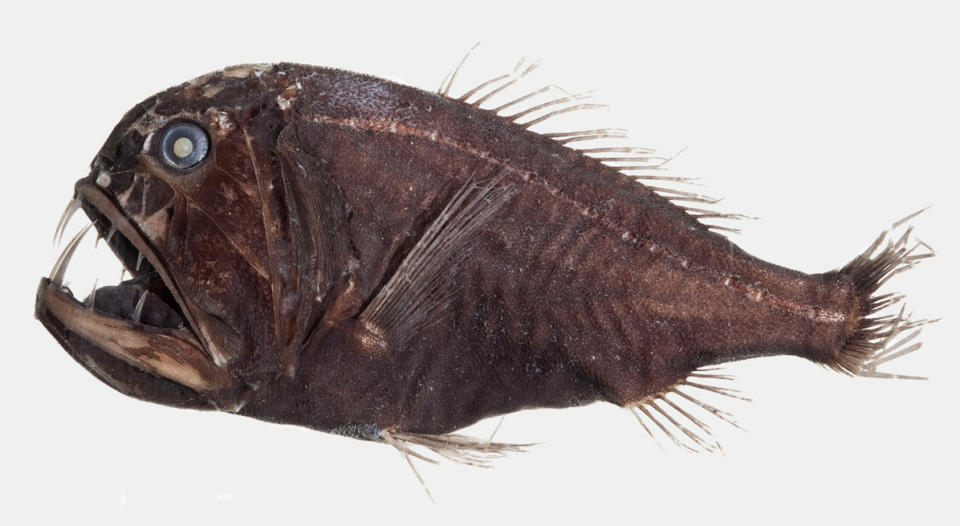
2. Fangtooth Fish
The common fangtooth (Anoplogaster cornuta) is a rarely spotted deep-sea fish that the Monterey Bay Aquarium Research Institute (MBARI) calls "almost as elusive as it is astonishing."
It gets its name from the two long teeth that protrude from its upper jaw. According to the Smithsonian Institution, the fangtooth's teeth are the largest of any sea creature, relative to its body size of about 7 inches (18 centimeters).
The fangtooth fish hunts small crustaceans, cephalopods and other deep-sea fishes by opening its mouth and sucking in, like a deep-sea vacuum. "They seem to eat anything that will fit in their mouths," Tracey Sutton, a professor with the Guy Harvey Oceanographic Center at Nova Southeastern University in Florida, told Newsweek.
Fangtooth fish primarily live in the mesopelagic (twilight) and bathypelagic (midnight) zones at depths of 1,650 to 7,000 feet (500 to 2,100 meters) but have been spotted as deep as 16,000 feet (almost 5,000 meters).
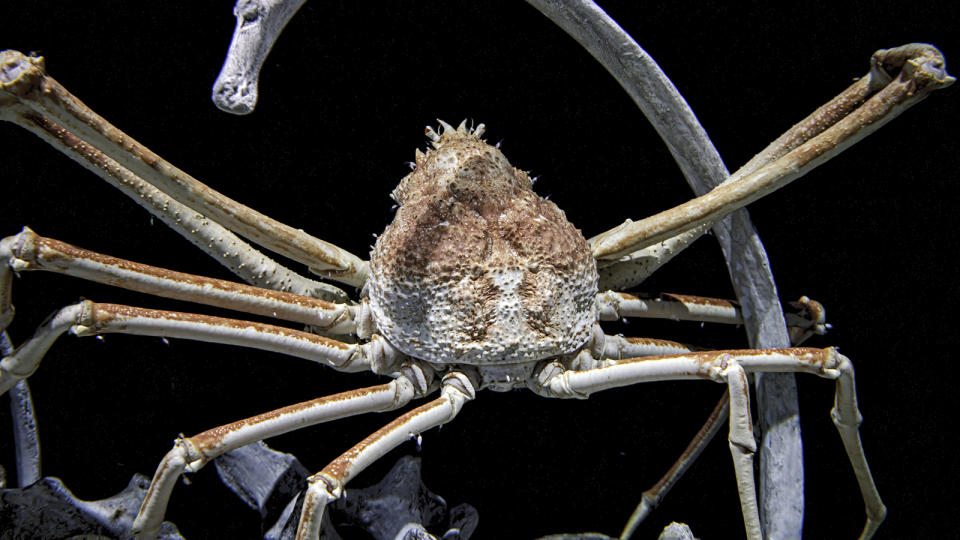
3. Japanese Spider Crab
With a leg span of 13 feet (4 meters), the Japanese spider crab (Macrocheira kaempferi) is the biggest crab in the world. It lives in the Pacific Ocean's mesopelagic (twilight) zone at depths from 660 to 1,800 feet (200 to 550 meters).
The Japanese spider crab has 10 legs, eight of which it uses for walking; the other two legs have claws and are for pinching. It spends its days walking along the sea floor, scavenging for dead animals and plants.
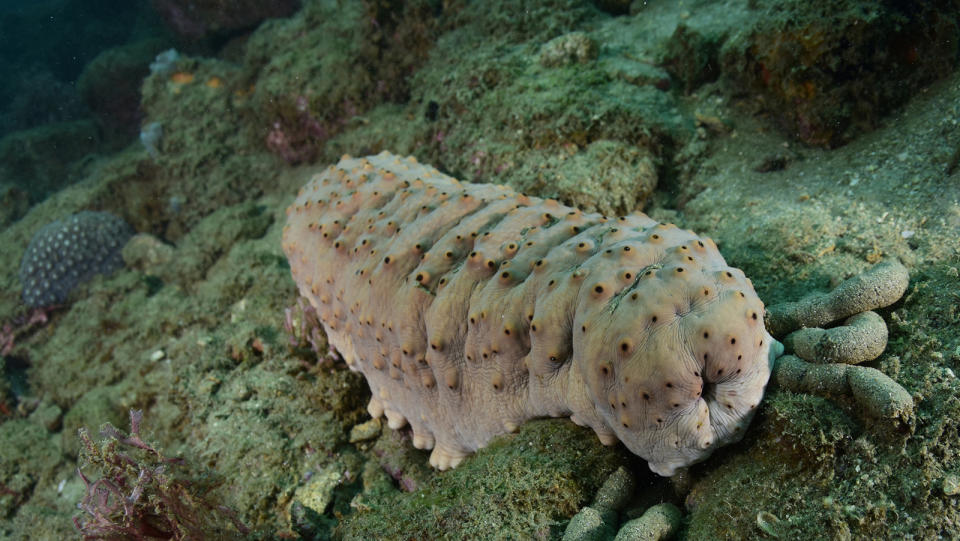
4. Sea Cucumber
Some deep-sea creatures are rarely seen by humans because they stay close to the ocean floor. Sea cucumbers (class Holothuroidea), however, can survive in both shallow waters and the deep ocean. They use their tube feet to eat tiny bits of algae and decaying organisms on the sea floor or plankton closer to the surface.
The smallest species of sea cucumber — there are over 1,200 — is about an inch long (2.5 centimeters), while the largest can grow to over 6 feet (1.8 meters) long, according to the National Wildlife Federation.
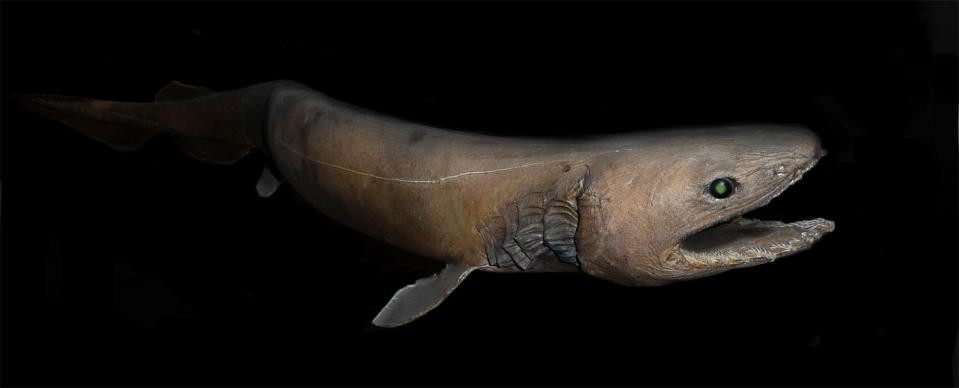
5. Frilled Shark
Although it's in the same class (Chondrichthyes), the 7-foot (2-meter) frilled shark (Chlamydoselachus anguineus) looks more like an eel than a great white shark. "The head on it was like something out of a horror movie," fisherman David Guillot, who accidentally caught a frilled shark in 2015, told 3AW radio (via NPR).
This 80-million-year-old deep-sea dweller ranges from the pelagic to the benthic zones, with an upper limit of 164 feet (50 meters) below sea level and a lower limit of around 5,000 feet (1,500 meters) deep.
According to the Shark Research Institute, it may swim with its mouth open, using its "conspicuously white teeth" to attract prey before swallowing them whole.
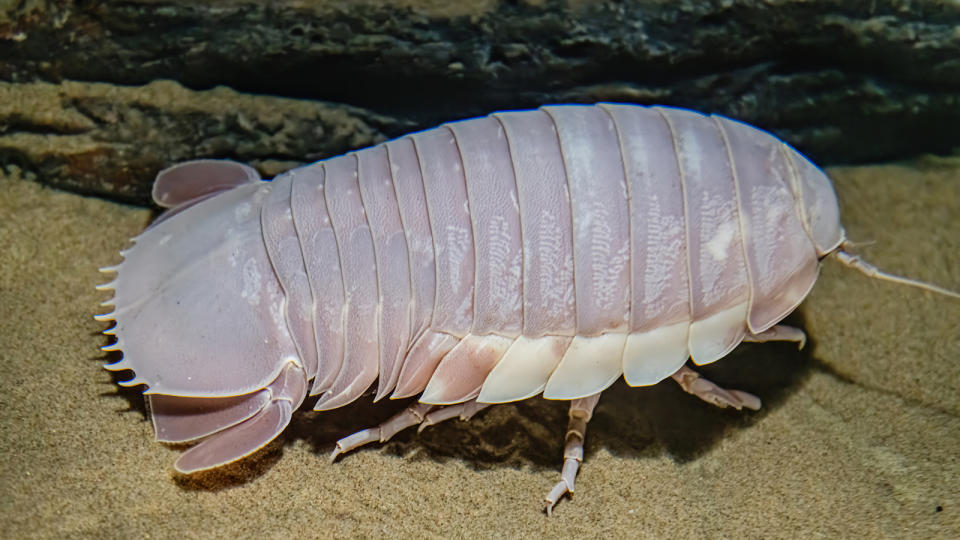
6. Giant Isopod
The giant isopod (Bathynomus) is a deep-sea crustacean related to roly-polys and pill bugs. Although the "giant" isopod ranges in size from 3 to 20 inches (8 to 51 centimeters) long, it dwarfs the majority of marine isopods, which are typically measure about 2 inches (5 centimeters) or smaller.
The giant isopod is a prime example of deep-sea gigantism, a phenomenon seen in other deep-sea creatures like the giant squid and the Japanese spider crab. It lives from 500 to 7,000 feet (152 to 2,133 meters) deep, from the lower epipalegic (sunlight) to the upper bathypalegic (midnight) zones.
"As far as we know, they are primarily scavengers," Ruth Carmichael, senior marine scientist at the Dauphin Island Sea Lab and professor of marine and environmental sciences at the University of South Alabama, told HowStuffWorks. "They play an important role in nutrient and element recycling" by digesting bits of decaying fish, crustaceans and sea sponges on the sea floor.
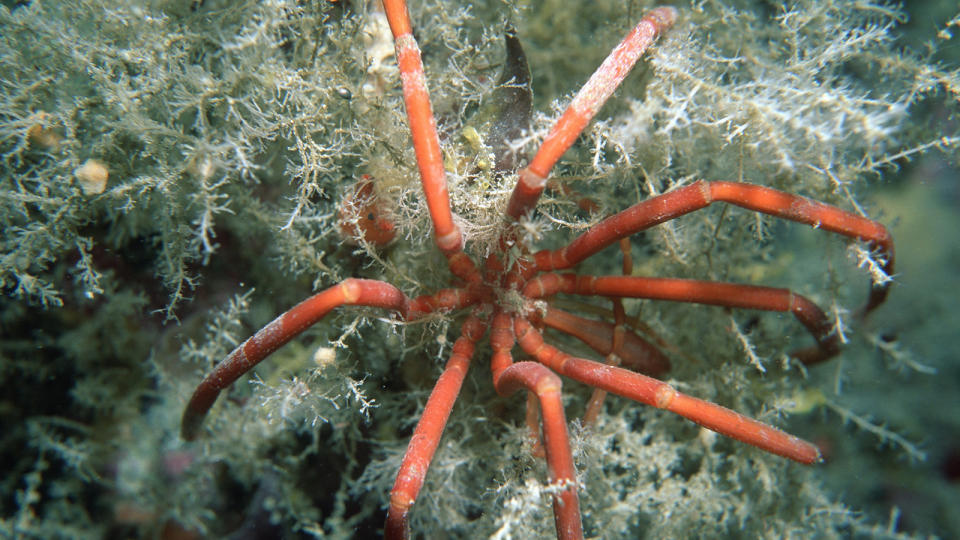
7. Giant Sea Spider
Like a daddy longlegs, the giant sea spider (Colossendeis) has long, delicate legs extending from a smaller body. Unlike a daddy longlegs, the giant sea spider prefers to live at the bottom of the ocean rather than in the corners of your ceiling.
Some species of sea spiders are tiny — the smallest have legs only a millimeter long — but the giant sea spider, which lives at depths of 7,200 to 13,100 feet (2,200 to 4,000 meters), can be up to 20 inches (51 centimeters) long, according to MBARI.
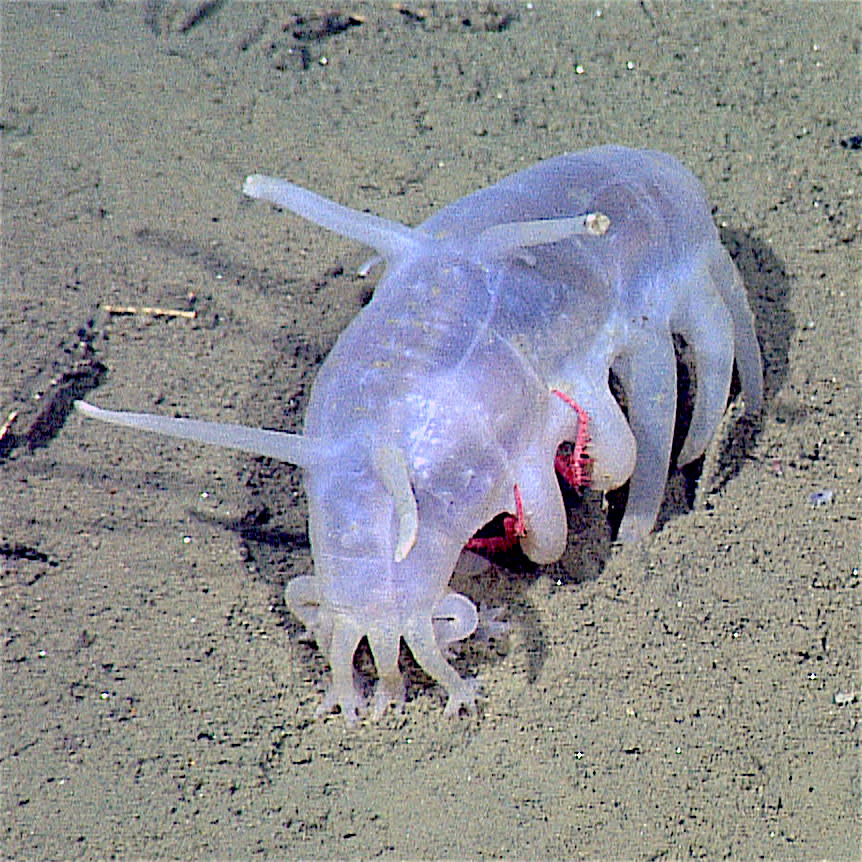
8. Sea Pig
Sea pigs (Scotoplanes) are some of the weirder-looking deep-sea animals. They are not related to pigs — the name comes from their pinkish transparent bodies and stubby tube legs — but are instead a type of sea cucumber. Their other resemblance to pigs is that they will eat almost anything.
According to MBARI, they reach lengths of up to 17 cm (6.5 inches) and live at depths of 3,300 to 19,500 feet (1,000 to 6,000 meters) on the seafloor of abyssal plains and eat decomposing organic material.
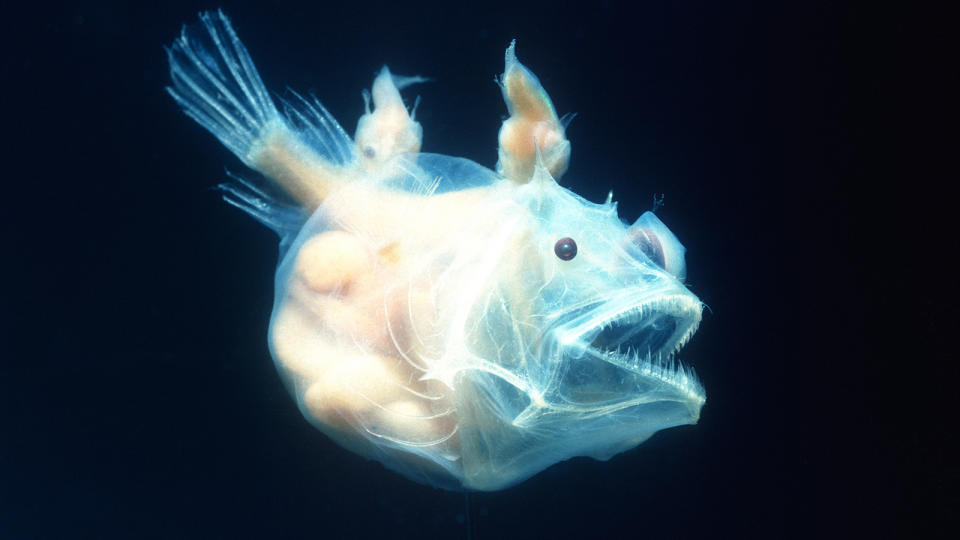
9. Deep-sea Anglerfish
Anglerfish (sometimes spelled as "angler fish") refers to around 200 deep-sea fish species found at various depths (up to 16,400 feet or 5,000 meters) and in many sizes, from the size of a fist to 4 feet (1.2 meters) long.
"New ones [species] are still coming up," Ted Pietsch, a professor at the School of Aquatic and Fishery Sciences at the University of Washington and author of "Oceanic Anglerfishes: Extraordinary Diversity in the Deep Sea," told How Stuff Works. "They live so deep that we don't really have a good idea of how big they actually get. We send nets down to collect them, and the deeper we go the larger specimens come up."
Anglerfish famously create their own light (a bioluminescent lure at the end of a dorsal appendage) to attract prey. But it's only the females of the species who hunt. Females are much larger than males — up to 60 times larger — and provide nutrients to their male mates.
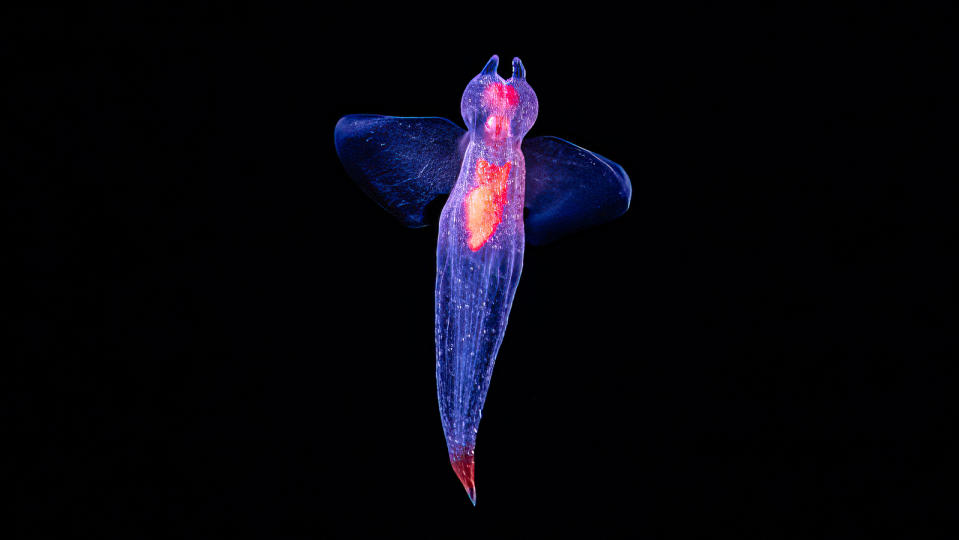
10. Sea Angels
The Monterey Bay Aquarium calls the sea angel "a type of swimming snail."
In place of the "foot" found underneath the shell of a regular ol' land snail, the sea angel (clade Gymnosomata) has two "wings" it uses to propel itself through the ocean. They also lack a shell, leaving their transparent bodies exposed — hence the name Gymnosomata, or "naked body."
Sea angels prey on other swimming snails, such as sea butterflies, using a tentacle-like appendage to scoop the flesh out of the shell. Despite their predatory habits, sea angels are small: just 1 to 2 centimeters long. They can be found from the surface to 2,000 feet (600 meters) deep.
Original article: 10 Deep Sea Creatures That Are (Almost) Too Bizarre to Be Real
Copyright © 2024 HowStuffWorks, a division of InfoSpace Holdings, LLC, a System1 Company

